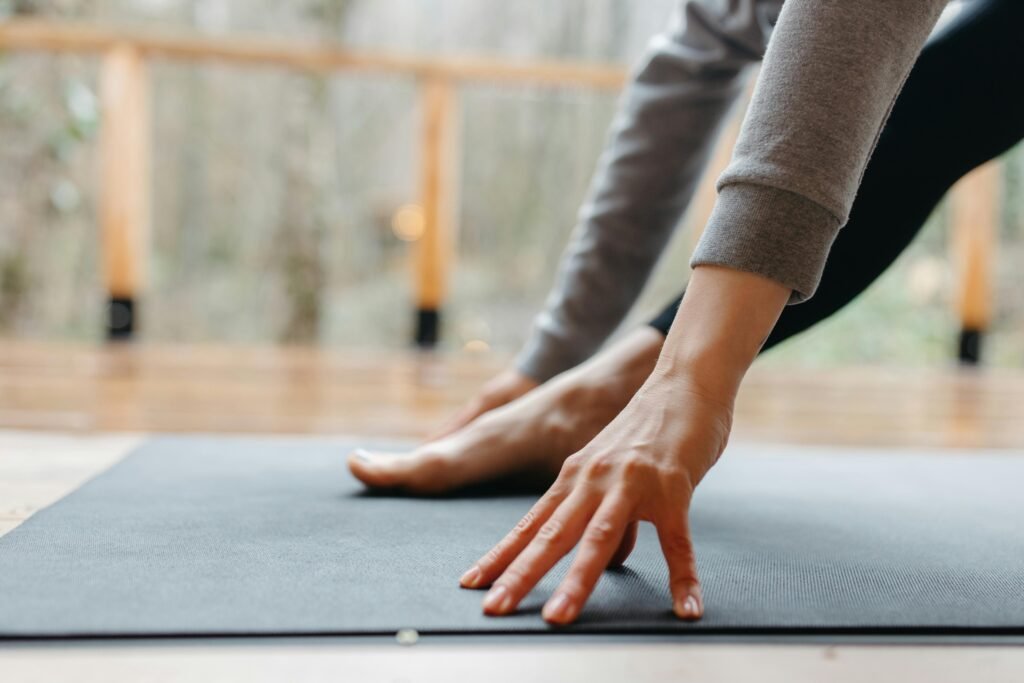In the present quick-moving world, keeping a customary wellness routine can appear to be an overwhelming test. However, making exercise a habit is quite possibly one of the most impressive steps you can take for your physical and mental health. The advantages of standard activity are unquestionable: further developed energy levels, better mental lucidity, and a more grounded, better body. In any case, how would you progress from irregular exercises to reliable wellness?
This article jumps profound into systems to assist you with exercising a habit, covering viable tips, significant plans, and inspirational experiences to keep you on target.

Why It’s Important to Make Exercise a Habit
Exercise is not just about aesthetics or fleeting fitness goals; it’s about cultivating a lifestyle that supports longevity, resilience, and well-being. Here’s why making exercise a habit matters:
- Consistency Drives Results: Standard movement conveys quantifiable enhancements in strength, endurance, and mental lucidity.
- Builds Discipline: Laying out a propensity pours out over into different everyday issues, encouraging discipline and schedule.
- Reduces Stress: Exercise supports endorphins, decreasing pressure and working on by and large mindset.
How to Make Exercise a Habit: A Step-by-Step Approach
1. Start Small and Be Realistic
Trying to do an excessive amount too early can prompt burnout or injury. Start with sensible objectives, similar to a 10-minute walk or two short exercises each week.
2. Identify Your Motivation
Knowing your “why” is pivotal. Whether it’s to further develop well-being, gain energy, or set a model for your family, your inspiration moves you along on extreme days.
3. Schedule Workouts Like Appointments
Treat your activity meetings as non-debatable appointments. Add them to your timetable and set refreshes.
Tips to Make Exercise a Habit That Sticks
Create an Enjoyable Routine
Choose exercises that energize you. Whether it’s dance, yoga, running, or strength preparation, doing the very thing you love improves the probability of consistency.
Find a Workout Buddy
Exercising with a companion or joining a wellness class adds responsibility and makes exercises more pleasant.
Reward Yourself
Celebrate achievements by indulging yourself with a prize, for example, new exercise gear or a loosening up spa day.
Track Your Progress
Use applications, diaries, or wearable wellness trackers to log your exercises and screen progress. Seeing upgrades can unquestionably inspire.

Breaking Barriers: Overcoming Obstacles to Exercise
Indeed, even the most propelled people face difficulties in practicing work-out regularly. Here are normal obstructions and ways of beating them:
- Lake of Time: Integrate short, extreme focus exercises or exercise during breaks.
- Low Inspiration: Make a dream board with your wellness objectives or set cautions with persuasive statements.
- Boredom: Stir up your daily practice with new activities, outside exercises, or wellness classes.
Building Exercise into Your Daily Life
Morning Workouts
Start your day with movement to set a positive tone. A speedy stretch or 15-minute run can empower you for the day ahead.
Lunchtime Fitness
Utilize your mid-day break for a lively walk, light yoga, or a speedy strength circuit.
Evening Wind-Down
Settle on delicate stretches or a loosening up yoga meeting to ease pressure and further develop rest quality.
Creating Long-Term Motivation to Make Exercise a Habit
Supporting a wellness propensity requires something other than determination: establishing a climate and outlook that cultivates achievement.
- Set SMART Goals: Explicit, Quantifiable, Attainable, Important, and Time-bound objectives give clearness and heading.
- Visualize Success: Envision how reliable activity will upgrade your life, from further developed well-being to more prominent certainty.
- Surround Yourself with Support: Draw in with networks, whether on the web or face to face, that urge and rouse you to remain dynamic.
The Role of Discipline in Making Exercise a Habit
While inspiration kicks you off, discipline moves you along. Incorporating exercise into your standard means committing in any event, when you don’t feel like it. Here’s how discipline helps:
- Reduces Decision Fatigue: Having a set timetable kills the everyday choice of whether to work out.
- Creates Momentum: Every exercise fortifies your obligation to the propensity.

Sample Weekly Routine to Make Exercise a Habit
| Day | Activity | Duration |
|---|---|---|
| Monday | Brisk walk + Stretching | 30 minutes |
| Tuesday | Strength Training | 20 minutes |
| Wednesday | Rest or Light Yoga | 15 minutes |
| Thursday | Cardio (Jogging or Cycling) | 30 minutes |
| Friday | Full-Body Strength Workout | 20 minutes |
| Saturday | Outdoor Activity (Hiking) | 40 minutes |
| Sunday | Rest or Gentle Movement | – |
FAQs
How long does it take to make exercise a habit?
All things considered, it requires around 66 days for a way of behaving to become programmed. In any case, consistency and devotion play a key part.
What if I miss a day or two?
Don’t stress. Missing a day won’t derail your progress. Simply take up where you left out and remain committed.
Can I make exercise a habit without going to the gym?
Absolutely! Home exercises, outside exercises, and even family tasks can add to a steady workout everyday practice.
What’s the best time of day to exercise?
The best time is the point at which you can reliably squeeze it into your timetable, whether morning, evening, or night.
How can I stay motivated to exercise regularly?
Put forth reachable objectives, keep tabs on your development, and help yourself to remember the advantages. Engaging in enjoyable activities also keeps motivation high.
Conclusion
Making exercise a habit is a journey that requires tolerance, diligence, and a positive mentality. Begin little, remain predictable, and recall that progress matters more than flawlessness. By incorporating wellness into your way of life, you’re not simply working out; you’re fabricating an establishment for a better, more joyful life.
Embrace the interaction, commend each step in the right direction, and allow exercise to turn into a characteristic and compensating part of your everyday practice.

